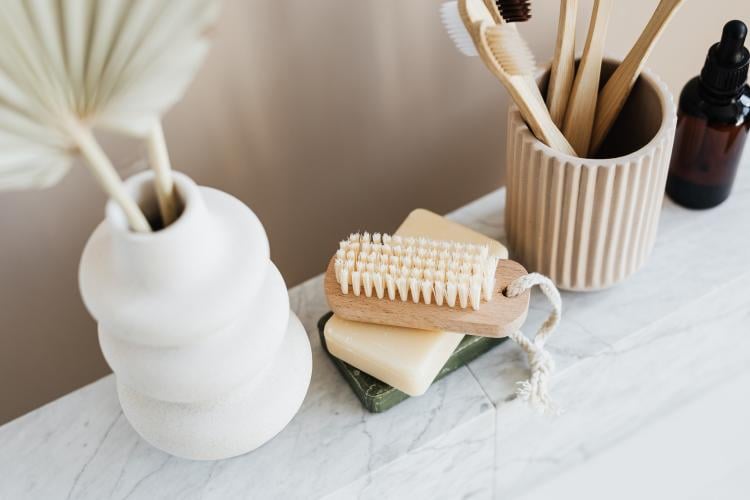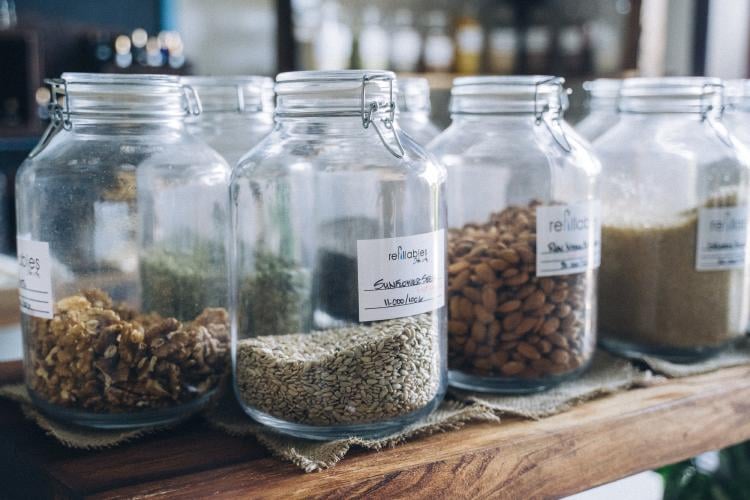
Whenever we look at the news or simply look around, we can see how fast and much things are changing. Buildings, malls, offices are taking over forests and parks leaving us unprotected but also hurting the planet. All of our actions have consequences upon the Earth, so maybe just by simply switching some things over our everyday life we can help build up a new world for our kids, or at least stop climate change. Then, we should be focusing on Sustainable Living: Why is it important to Go Green?

Having a glace at how the world is changing might be distressing at times. And it's difficult to discern whether our individual efforts are having an impact. However, every action or change that we do have an impact. This is why I always say that it doesn't matter if you are doing a big or a small change, every little step counts towards sustainability.
Adopting a sustainable living lifestyle is crucial for a variety of reasons. The obvious advantage is that it results in less emission of green gases and the use of fewer resources. However, there are several more advantages when you go green, including saving time and money, encouraging healthy eating, avoiding chemicals that might hurt you, and challenging ourselves to be more resourceful. It also serves as an excellent example for your youngster.
Also, when you Go Green you are encouraging others to follow your example. You make every effort to live lightly in the world. You're kind to Mother Nature, and you're appreciative and cautious with the earth's resources. And you provide lots of opportunities for your kids to play outside and fall in love with nature.
Depending on who you ask, "to go green" might mean various things to different people. While some people may fully embrace the zero-waste and sustainable living trend, others may find it impossible or frustrating. But what I like to focus on is the fact that we need to start reducing our waste and at least recycling a little bit every day. These changes will definitely have a significant impact on Earth.
Some of the changes you should begin with might be choosing wisely what you would like to consume. It is important to promote brands that are ethical and environmentally responsible. There will be some times when this might not even be possible because of the crazy world we live in, but it is worth trying when we can. Here you can find some simple steps that can guide you on a starting point for a Go Green lifestyle.
I bet you have heard about Reduce, Reuse, and Recycle, (Otherwise you can red it here: Reduce, Reuse & Recycle: What does it Mean, How to put it in Motion). Well, this is the most crucial of the three R's. You may believe you aren't contributing to ocean rubbish since you never litter at the beach, but have you seen what's floating about out there? Plastic bottles, toy beach shovels, and supermarket bags aren't the only things that pollute the environment. Laundry detergent bottles, balloons, huge yogurt containers, and milk jugs are all included. So, maybe changing to more sustainable products or containers might be a bit of a game-changer.
If you would like to start flipping things around but you are not sure where to start, I can give you some ideas of What Makes a Sustainable Home. Take advantage of natural light, buy recycled or reusable products, and save on electricity. You can learn much more by reading our article What Makes a Sustainable Home? Have You Got the Know-How?
If we would pay more attention to how many useless things we buy that we do not need, there might not be as much junk in the oceans as there is now. So when thinking about buying new stuff, doublethink if you need it. Maybe you already have something at your house that could be useful instead. Keep in mind that placing an item in your recycling bin does not ensure that it is recycled. The best option is to reduce your overall consumption or at least exchange your disposables for reusables. There are many options to Go Green by just choosing reusable items. Some of them are included in the following lines.
Here you have an Easy Guide to incorporate Zero Waste Beauty Routine
Unless there is a contamination concern, the simplest method to decrease waste is to avoid using plastic water bottles when you are at home. Bottled water has been proven to contain pollutants, and many brands are no better than tap water when tested.
Each year, up to 17 million barrels of oil are used in the manufacture of plastic water bottles. Then, each bottle can take up to a thousand years to degrade, releasing toxic and deadly chemicals as it does so. Some of the pollutants that were released might cause cancer and reproductive problems.
It's not difficult to avoid using plastic water bottles at home. All you need to do if you would like to have a more sustainable living at home is drink water from a glass and keep a reusable bottle on hand for when you're out and about. Even in many emergency circumstances, it is not necessary to purchase cases of plastic water bottles.
It might seem silly but if you would like to Go Green and have more sustainable living, start from home by not buying plastic bottled water. This is just one minor tip that could impact big in our lives as human beings. If you are interested in finding more Sustainable Home Tips, we have a published article called How to Design a Sustainable Home? 50 Easy Sustainable Home Tips! that can guide you through tips and tricks on how to turn your house into a more sustainable one.
In general, cardboard is easier to recycle than plastic, and paper goods break down more quickly without adding a lot of weight to the product, as glass or metal may. When you have the option, choose pasta in a box over pasta in a bag, or detergent in a box over detergent in a bottle. Even better, look for firms that get their cardboard in a sustainable manner or have a strong position against deforestation.

This suggestion is at the top of every tip list for more sustainable living because it has a HUGE impact. Every year, there are at least billions of plastic bags used across the world. Sadly, they usually end up at the bottom of the oceans. Birds frequently confuse shredded plastic bags for food, resulting in hazardous waste filling up their bellies.
Also, hungry sea turtles can't tell the difference between a jellyfish and a floating plastic bag. Every year, fish consume thousands of tons of plastic, passing it up the food chain to larger fish and marine animals. And this is how we, humans, end up eating microplastic from fish.
Reusable bags are frequently distributed at events or fundraisers. They sometimes come with the products you purchase, but here you have great options as well: Tote Bags, a Green Alternative for a Sustainable Lifestyle
While plastic water bottles and supermarket bags are the most outrageous enemies for sustainability, there are other substitutions that may make a significant difference. you can make simple changes in any area of your house in order to go green. Changes will improve your life quality as well as your sustainability. If you would like to have more ideas to build a more sustainable life, you can have a look at our article 14 Ideas for an Eco-friendly House: Learn all About it! But while you do that, here are some small changes you can make to have a more sustainable living:

Cooking at home using fresh ingredients is a great method to lessen your environmental impact. Buying food from your local farmers' market usually results in less packaging waste, and you're also helping the community. Eating more veggies and less factory-farmed meat reduces greenhouse gas emissions.
If your household consumes meat, try reducing serving sizes and allowing veggies to take center stage on your meal. When purchasing meat, be sure it is from a reliable grass-fed source that is free of hormones and antibiotics.
Not only is dining at home healthier and less expensive, but fast food and take-out containers contribute to heaps of single-use garbage. They are frequently made of plastic and end up in the oceans.
Moreover, plastic baggies, plastic wrap, and plastic storage containers aren't ideal for food safety, and they're far worse for the environment. There are several food-safe and reusable glass storage containers, beeswax wraps, and silicone bags and containers available. And you might be amazed at how many uses (and re-uses) there are for mason jars in the fridge and pantry.

According to the World Wildlife Fund, many of the methods we receive our energy, whether it's power for our houses or gasoline for our cars, are filthy and wasteful. Making energy saving a priority is one approach to reduce your family's carbon impact.
For example, running a few loads of laundry every day may soon add up to a lot of wasted water, plus a lot of money for the water bill. It's a good idea to make it a rule not to run the washing machine until it's completely full. Another great idea is to collect rainwater, check this post: How to choose the best Rainwater Collector for you and its Benefits
Connect with nature to completely understand WHY you will go green. Walking barefoot in the grass helps to balance out our technological exposure. Looking up at the sky or standing on the edge of the water reminds us of the universe's marvels and immensity. Hiking in the woods helps us to take deep breaths and forget about the stresses of everyday life.
Spending more time outside helps to develop our "nature neurons" and natural inventiveness. For example, being exposed to nature can increase our dopamine and serotonin levels. Also, it is known that employees are more productive and take fewer sick days in workplaces created with a natural mindset.
another way to achieve this connection with nature could be by filling up your house with plants. They will help you connect with nature and become more aware of the surroundings. You can also choose your furniture wisely alongside the plants. There are many different options to turn your house into a fully sustainable one, one of them is by getting Sustainable Furniture. Here are some examples of 10 Sustainable Furniture Brands for a Conscious, Glamorous Home.
Now that you got all the information that you need to flip your life around, are you ready to Go Green?